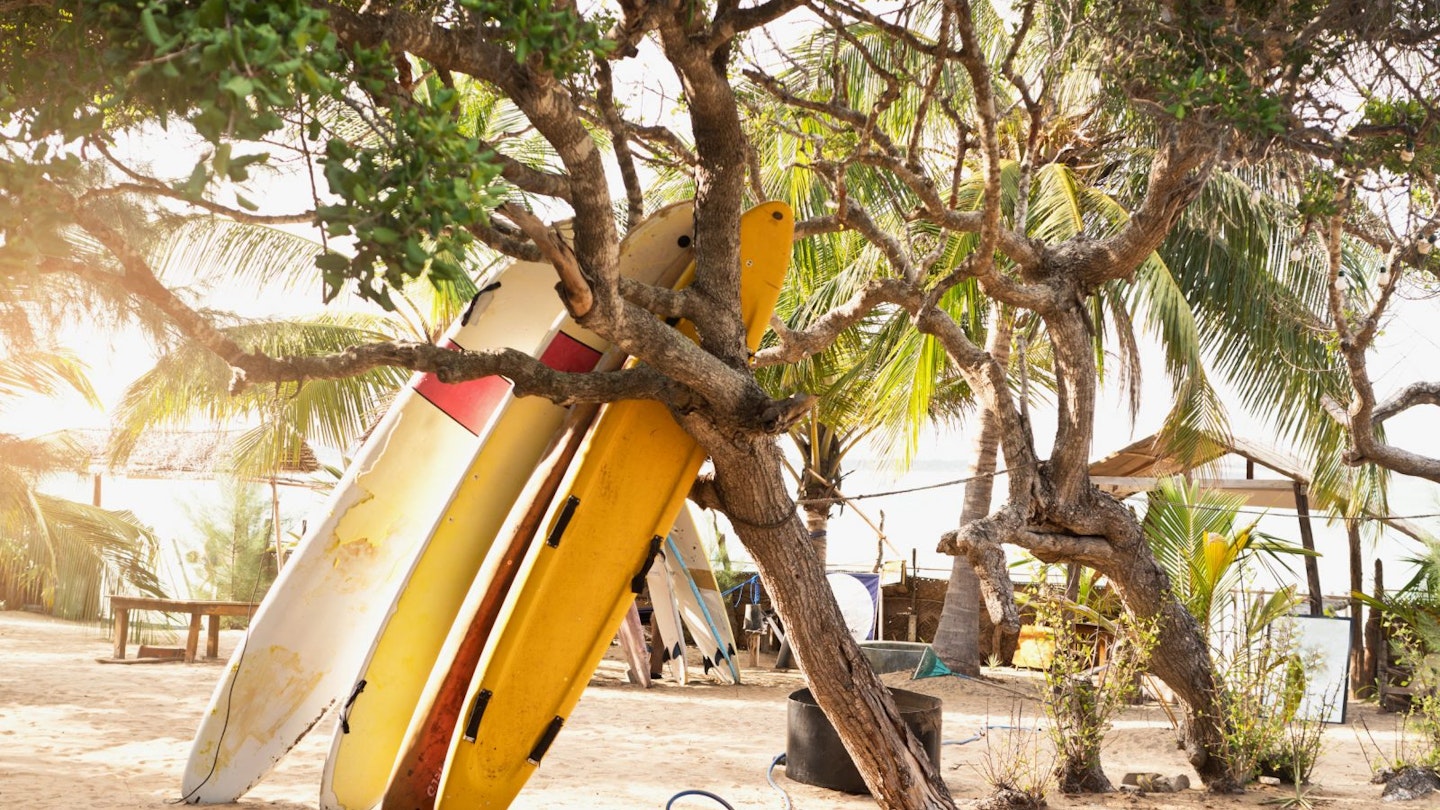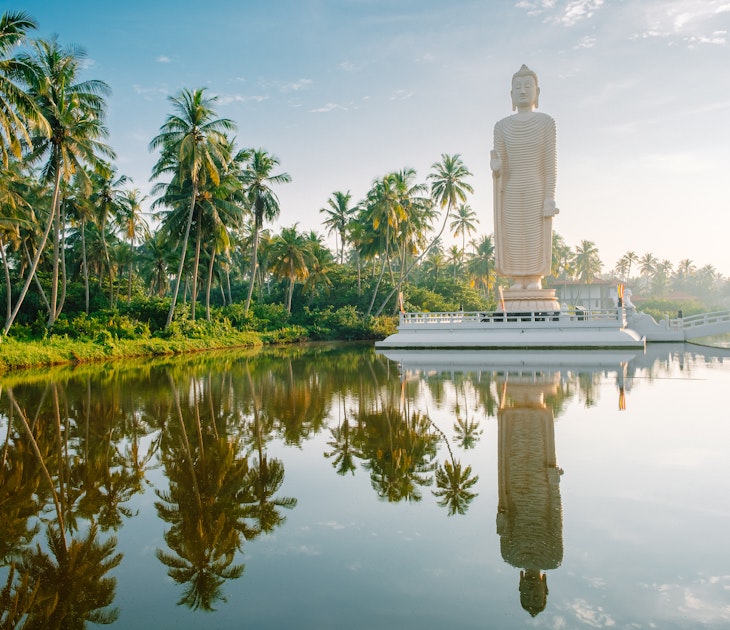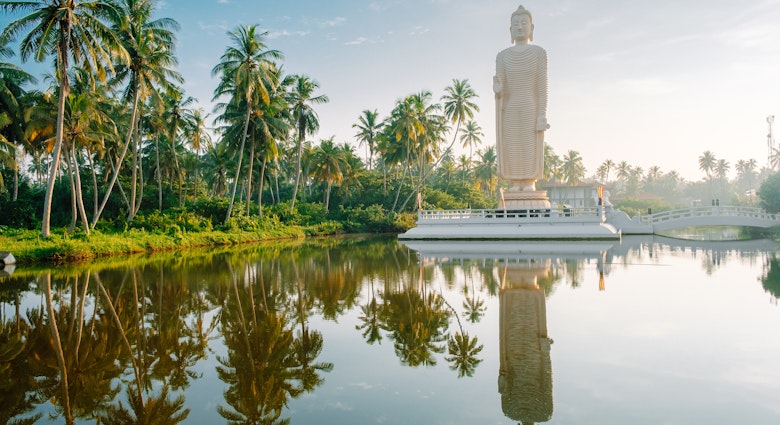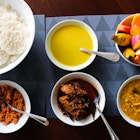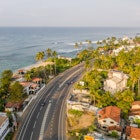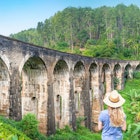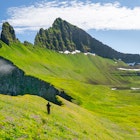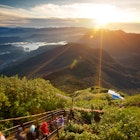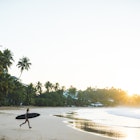The morning sun warms the back of my neck as I float on a foam-topped surfboard in the cerulean shallows of Sri Lanka’s Arugam Bay. My instructor, whose swim attire includes a baseball cap and a pair of thick sunglasses, drifts on his own board nearby, dispensing advice on how I should go about catching the next wave.

As an oncoming swell starts to break, frothing like the jaws of a rabid dog, I begin frantically paddling towards shore. For one glorious moment the wave carries me along, until the nose of my longboard plunges beneath the water and I’m sent somersaulting head-first through the surf.
When I resurface, frustrated and embarrassed, I find my instructor drifting idly by my side. ‘No problem,’ he says, lowering his giant dark glasses onto his nose, ‘Just relax, machan’ – the Sinhalese term for ‘dude’.

Discovering Arugam
Despite Sri Lanka’s meteoric rise to become one of Asia’s hottest tourist destinations, blissful Arugam Bay, on the country’s east coast, has effortlessly retained its cool. While crowds of tourists sweat to snap the perfect shot of the country’s ancient temples, at Arugam barefooted boarders laze in the sun sipping strawless organic smoothies.
A successful visit to Arugam means embracing this beach town’s mellow mantra – something that can take a little training for the uninitiated. To set you on the right track, here’s our comprehensive guide to chilling out in Arugam Bay.
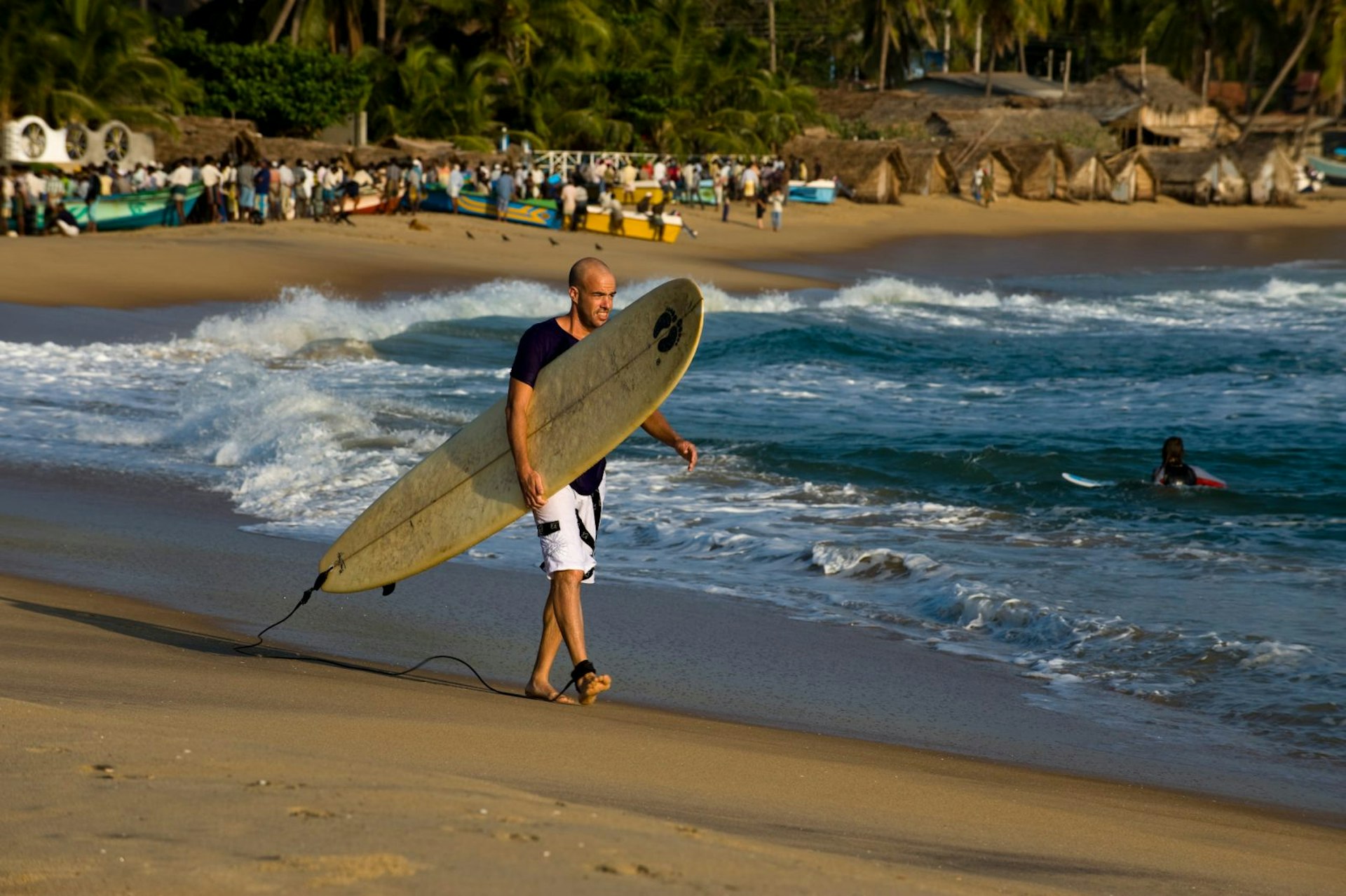
Everybody’s gone surfin’
Thanks to the bay's compelling and consistent breaks, surfing has been integral to the shaping of Arugam’s identity, with the sport spurring the town’s development from tiny fishing village to fully fledged tourist destination.
As far back as the 60s, intrepid boarders were venturing to these sleepy shores to surf fabled right-hand rollers and gnarly reef breaks, staying with local families or simply stretching out overnight on the warm sands. As word spread, the town’s popularity grew, and today Arugam’s turquoise waters host international surf competitions and are flecked with local and foreign boarders during the April-October high season.
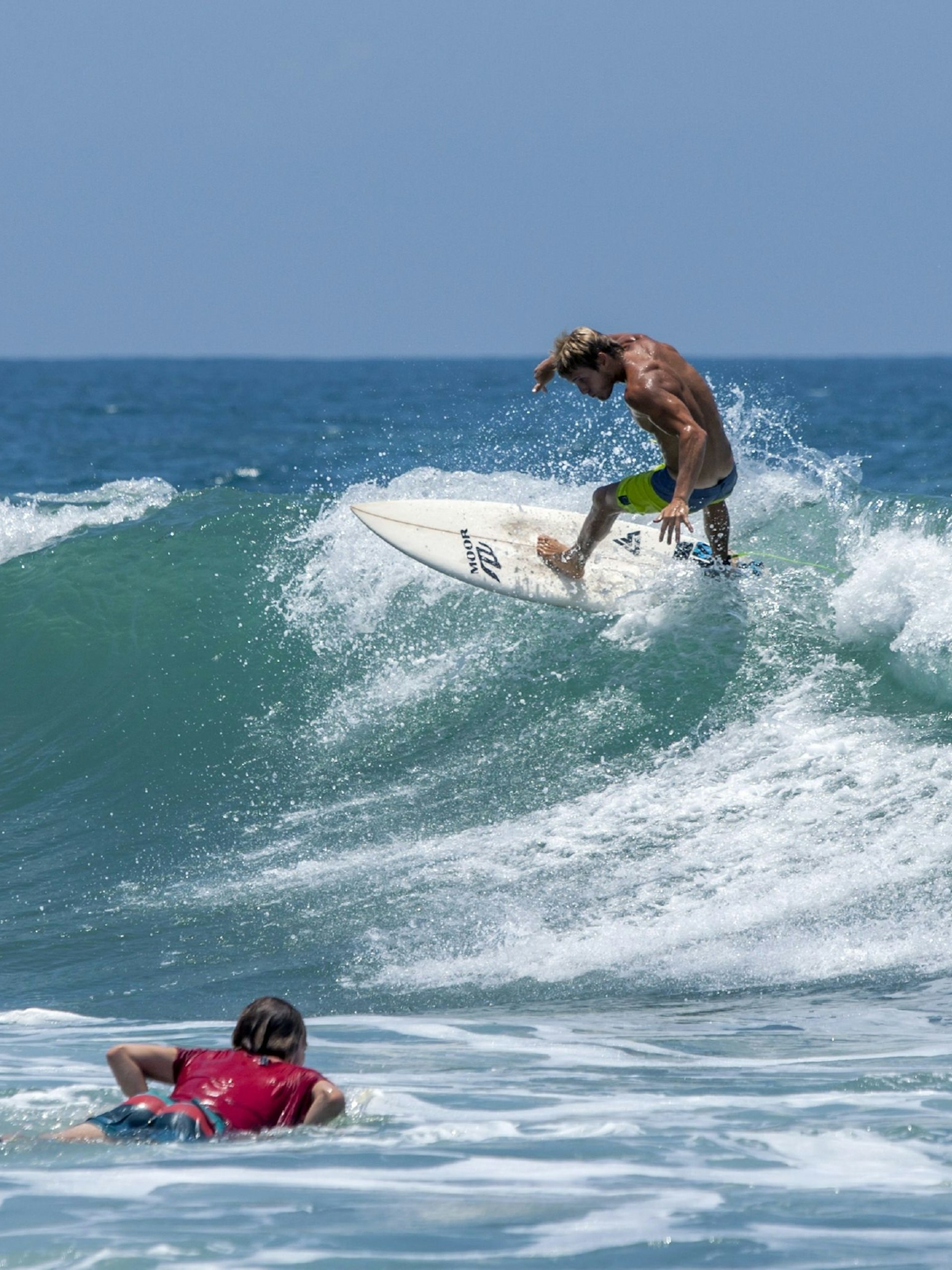
Amateurs wishing to join the crowds should make use of one of the town’s beachside surf schools. Safa Surf School, run by local surfer Fawas Lafeer, offers first-rate lessons from – remarkably patient – Sri Lankan instructors, while Dylan’s Surf Company draws plaudits for its high-quality rental kit.
Seasoned surfers, meanwhile, can flag down a rickshaw and travel – with board strapped precariously to the roof – to less crowded beaches along this stretch of coast. A short rattle south of Arugam, Peanut Farm benefits from two rewarding breaks (one of which is reserved for experts), while Okanda, further south again, offers a legendary right-handed point break that rarely gets busy. To the north, Pottuvil Point offers a good alternative for newbies looking to branch out from the main bay.

Beauty and the beach
Back on dry land, Arugam’s modest township appears almost as an embodiment of its surfer community’s collective psyche: a scattering of relaxed homestays and eco-tinged eateries splaying from a single beachside road.
To sample the town’s distinct flavour, travellers should head to Hideaway, serving fresh juices in a walled garden where swings dangle from shady trees and cane loungers are scattered around the coffee tables. Alternatively, the surf-obsessed owners of Happy Panda can whip you up a healthy, fruit-heavy breakfast with local curd each morning, and also provide three basic guestrooms set around a hammock-strewn courtyard.
That’s not to say Arugam is only for the health conscious. Cosy Meena plates up sizable plates of Sri Lankan specialities, including giant portions of kotthu (rotti chopped up and mixed with veggies). Globe-trotting Breakpoint, on the main road through Arugam, serves tasty renditions of Israeli staples shakshuka and falafel, along with what’s claimed to be Sri Lanka’s largest schnitzel sandwich.
As the sun sets, wooden tables and chairs are dragged out onto the white sands. Charcoal BBQs are lit and a selection of fresh seafood is spread across countertops like scaley sirens, tempting hungry passers-by. Haggling over price after settling on your desired fillet is normal, but, in typical Arugam-style, is done with a smile and minimal zeal.
Those not feeling sufficiently placated post-dinner should head to one of the town’s bustling bars, where makeshift beach parties offer escapism of both the audible and liquid variety late into the evening.
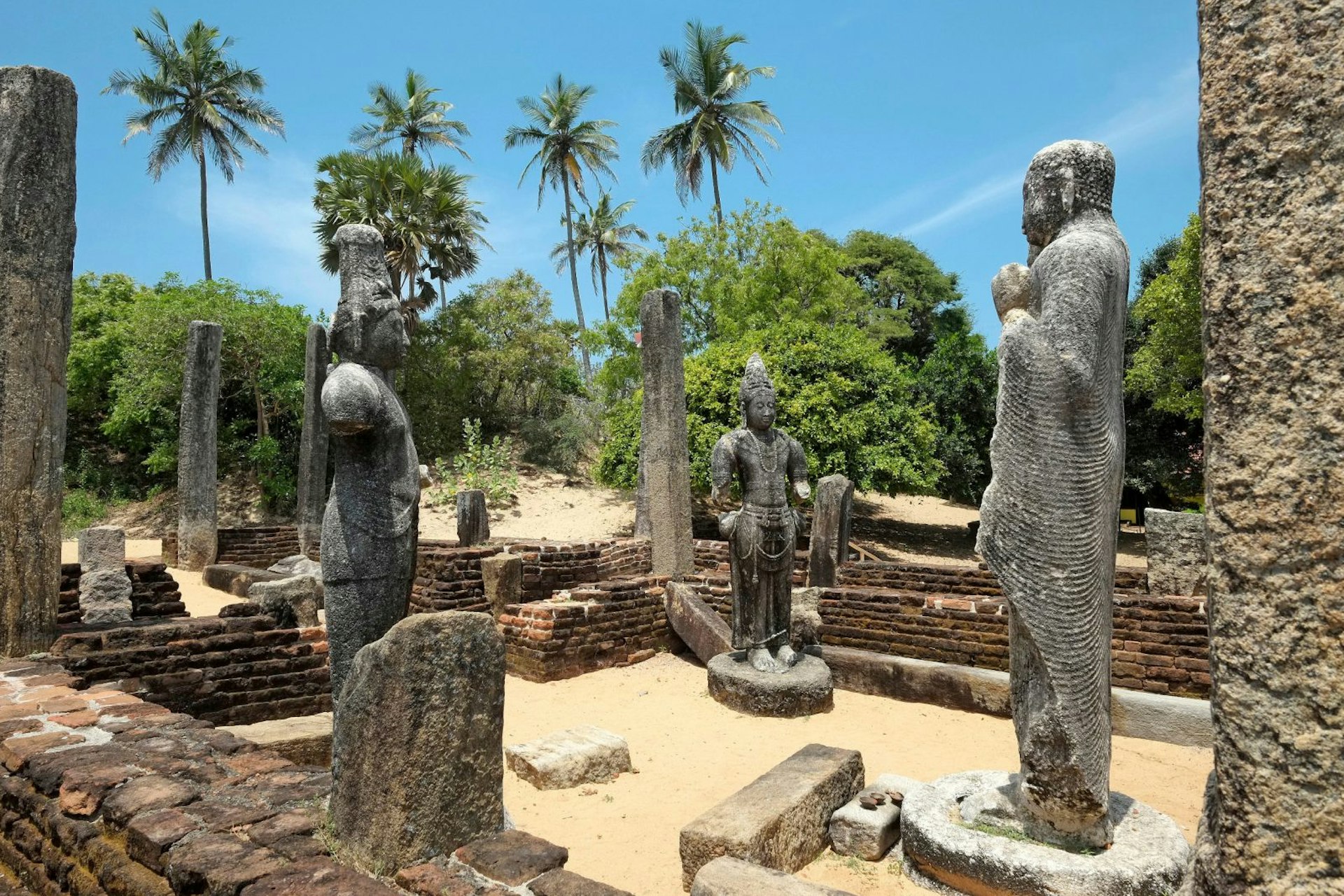
A harmonious heritage
Given the growing number of expats and establishments catering to western tastes, first-time visitors to Arugam could be forgiven for thinking that the town’s easygoing ethos has been engineered as a result of foreign influence. But Arugam’s penchant for a peaceful life predates the arrival of even the earliest wave riders.
Geographically the town straddles the rough divide between Sri Lanka’s Sinhalese-dominated south and the Tamil and Muslim-majority north, resulting in a cultural mixture of residents, who, despite the country’s civil issues, have long cohabited in harmony.
To get a sense of the region’s rich history, spend a lazy afternoon strolling the streets of neighbouring Pottuvil, a small town sprinkled with weathered mosques, churches and Buddhist temples.
The star attraction, however, is the Magul Maha Vihara, a 5th-century ruin wrapped in a tangle of forest. The atmospheric site is believed to have been a royal compound built by King Dhatusena (459–477AD), and despite its grand age is still home to a miraculously well-preserved moonstone encrusted with a ring of intricately-detailed elephants.
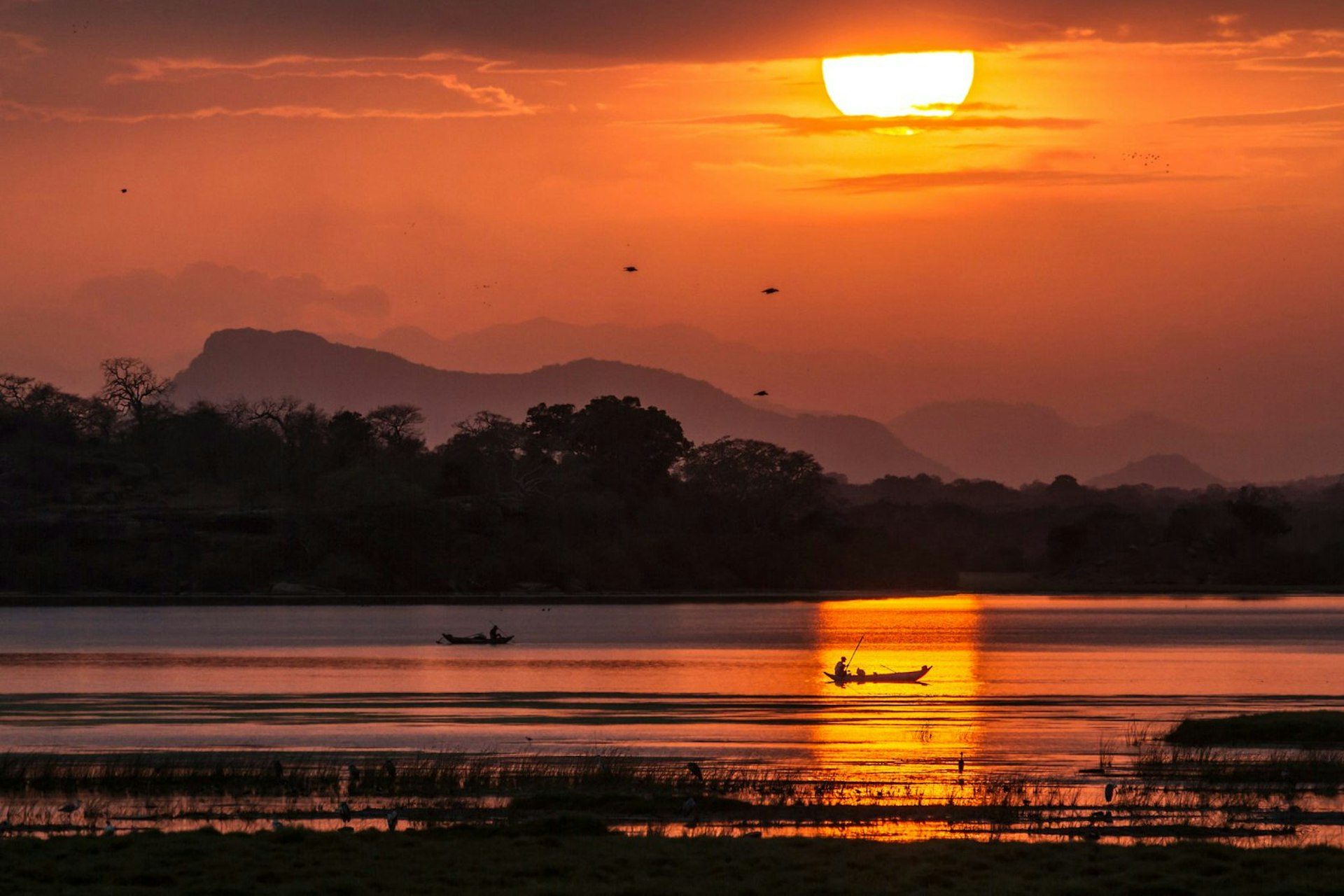
A walk on the wild side
Aside from the waves and insouciant aura, Arugam’s other main draw is its proximity to areas of outstanding natural beauty, rich in wildlife.
Arugam is flanked to the north and south by two large lagoons, where local fishermen row visitors between mangrove thickets in search of crocodiles, monitor lizards and a wealth of birdlife, ranging from peacocks to pelicans. For the most magical encounters, book a visit in the morning or early evening, when temperatures are cool and the light paints the lake’s still waters with a pleasant orange glow. Mangrove Ecotours runs trips on the Pottuvil lagoon, while Panama Lagoon Eco Safaris operates on the Panama lagoon.
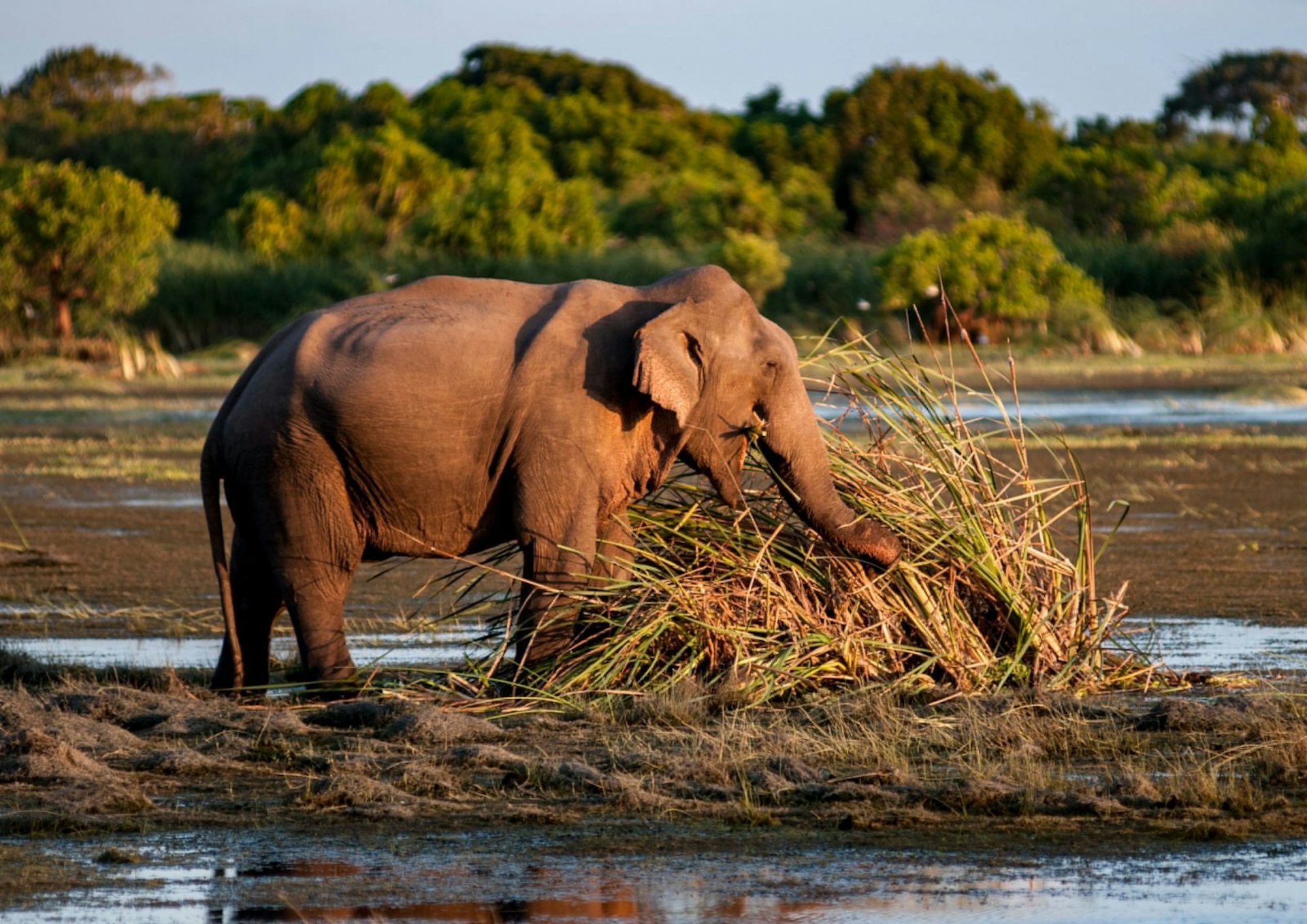
The real showstopper, however, is Kumana National Park, 1½ hours from Arugam by road. Formerly known as Yala East, this 357-sq-km wildlife reserve is far less crowded than the nearby, more famous Yala National Park, but still boasts a stunning array of wildlife. The opportunity for up-close glimpses of the iconic Sri Lankan elephant is the park’s central drawcard, but on a good day experienced eyes can spot leopards, white cobras and potentially one of the park’s elusive bears.
When the wildlife spotting is done, rather than face the bumpy drive back to Arugam many visitors choose to overnight on the coast nearby, a blissful experience where tents are erected on empty stretches of sand and fresh fish are grilled on wood fires. There’s really nothing else to do but grab a plate, listen to the surf roll in and, in the words of one sunglasses-sporting surf instructor, just relax, machan.

